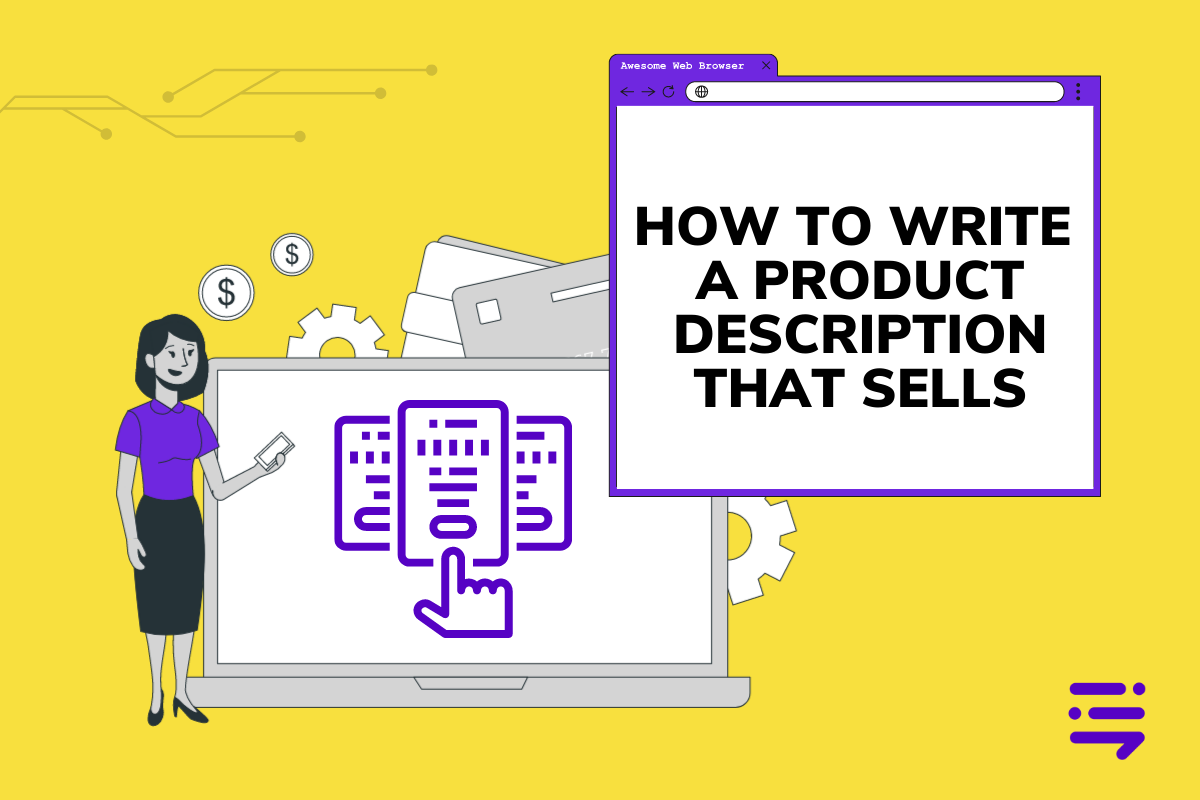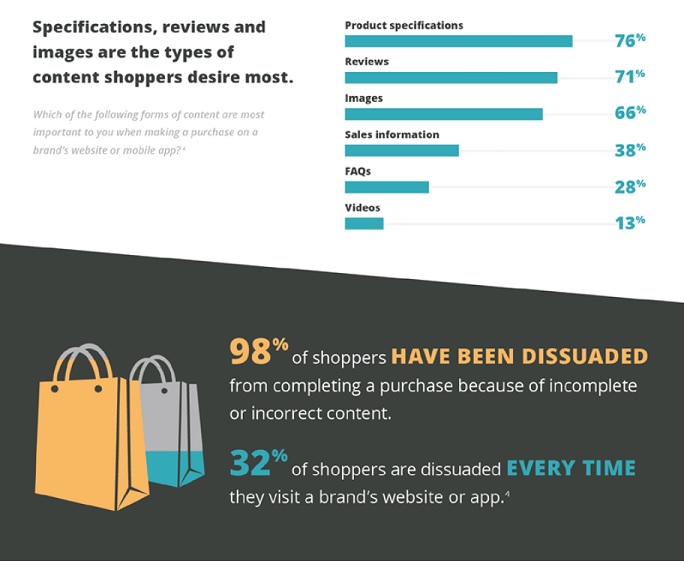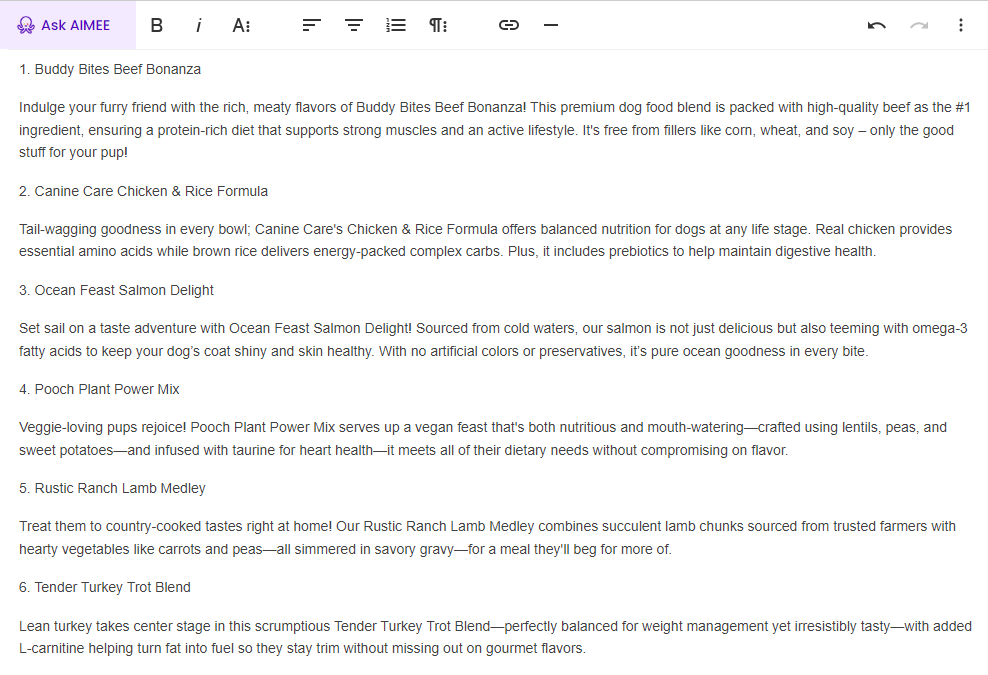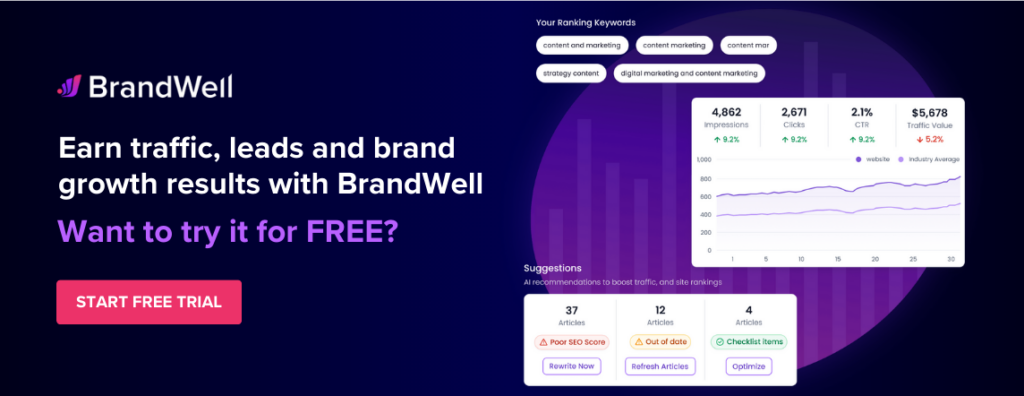Discover top guides, trends, tips and expertise from AIO Writers

Is writing product descriptions a constant struggle? Do you know how to write a product description that sells?
It’s no secret that product descriptions play a huge role in improving organic search rankings for e-commerce websites. Optimizing product descriptions with keyword-rich product details has increased the organic traffic of retail giant Overstock.com by 84% in just one month!
Not only are well-written product descriptions good for SEO, but they also have an impact on consumers’ buying decisions.
In a Salsify report, 88% of shoppers said product descriptions are very important when they’re trying to decide on a purchase, and 50% admitted to returning an item because it didn’t look like what was described in the product content.
So how do you write a product description that sells?
Today you’ll learn the secrets to writing product descriptions that will get your customer to open their wallets. Whether you’re just starting or looking to improve existing content, this guide will show you how to write content that sells.
Table Of Contents:
- What is a Product Description?
- How to Write a Product Description That Sells
- Writing Product Descriptions With AI
- Conclusion
What is a Product Description?
Product descriptions are a key element of any e-commerce business. They provide shoppers with all the necessary information to make a purchasing decision.
Good product descriptions can help boost sales, while bad ones can lead potential buyers away from your page. Writing effective product descriptions is essential for success in the online retail space, and it requires more than just listing out the features and technical details of your item.
When writing a product description, you should focus on your customer.
- How does this product solve their problem?
- Why should they buy this product instead of its competitors?
Think about what would make your customer click “Add to cart” and use powerful words and creative language to convince them to do so.
How to Write a Product Description That Sells
Creating an effective product description is critical for any e-commerce venture to be successful. It’s the first thing potential customers will see when they come across your product listing.
Here are 10 tips for writing product descriptions that drive sales.
- Focus on Benefits. Instead of just listing the product features, highlight what your product does for customers and how it can make their lives easier or better.
- Use Descriptive Language. When writing product descriptions, paint a vivid picture of the features, advantages, and uses of your product with words that evoke emotion.
- Be Concise. Keep descriptions short and to the point. Avoid long paragraphs that are difficult to read.
- Showcase Customer Reviews. A smart shopper will always look for product reviews before buying something. If your product description contains feedback from other customers who have bought the same item, it can help build trust in potential customers.
- Write for Search Engines. When you write product descriptions, try to incorporate keywords so search engines will be able to easily find them when users type related queries into the search field.
- Tell the Product’s Story. Create an engaging narrative around why this particular product is special compared with similar items online.
- Avoid Clichés. Steer clear of overly used expressions such as “best ever” or “must have” as these don’t add value to the reader’s experience nor do they help you stand out among competitors.
- Add Visuals. Supplement written text with visuals such as images, videos, or infographics to make your product description more engaging.
- Add a Call to Action. Encourage customers to take action and purchase the item by including a clear call-to-action at the end of each description.
- Proofread. Double-check all facts, figures, and spelling before publishing product descriptions. This will add to your credibility and make your listing look more professional.
Learning how to write a product description that sells requires research and creativity — two things we’ll focus on in the next sections.
Research Your Product
Knowing your product’s features, benefits, and specifications is the first step in crafting a detailed and accurate description that will appeal to potential customers.
Start by gathering as much information on the product you are writing about. Gather facts from the manufacturer, customer reviews, and other data that could form your description.
Find out what makes this particular item stand out in the market – such as unique features or competitive advantages – so you can emphasize these points in your copy.
Write for specific audiences. For example, if you’re selling a laptop for business use, then focus on highlighting features like processing power and battery life that would be attractive to professionals looking for reliable work performance. On the other hand, if you’re targeting gamers, then emphasizing graphics capabilities or multimedia functions might be more appropriate.
Don’t forget to look at competitor products too. Look at what they are offering so you can find ways to make your product different — whether it’s through pricing structure or extra product features.
By doing this research beforehand, you will have plenty of information to work with when writing descriptions.

98% of shoppers do not complete a purchase because of incorrect product descriptions.
Anticipate Your Buyer’s Pain Points
Pain points are the problems, needs, and worries of your potential buyers. As a content marketer, it’s important to anticipate these pain points so you can address them in your copy. By doing this, you’ll be able to show how your product solves these problems and convince the customer to ultimately make a purchase.
Here are three tips for anticipating buyer pain points.
1. Ask yourself questions about the customer experience.
What challenges do customers face? What questions do they have? How can I make their lives easier?
Thinking through these questions will help you uncover potential pain points that you should address in your product description.
2. Research what people are saying online about similar products or services.
Social media platforms like Twitter and Facebook offer valuable insight into what customers think of similar products or services as yours — and what issues they may have with them. You can also search forums related to your industry to see if any common complaints come up often from users. This type of research is invaluable when it comes to understanding buyer pain points and effectively addressing them in your writing.
3. Listen to customer feedback.
Surveys allow companies to get direct feedback from customers on their experiences with a particular product or service — including any issues they may have encountered along the way. Similarly, conducting one-on-one interviews with current customers gives marketers more detailed information on how satisfied (or dissatisfied) they were with a given product, which can then be used to craft better messaging around solving those specific problems.
Create a Compelling Product Title
Creating a compelling headline is an essential part of any product description. It’s the first thing potential customers will see, and it needs to be attention-grabbing and informative.
Your headline should summarize what you’re selling, as well as provide an idea of the features or benefits that make your product unique. The aim is to entice readers to explore further into your product by offering a sufficient amount of data that will spark their interest.
Make a list of the advantages and features of your product or service, then consider how to communicate them in an engaging way that speaks to your target customer’s needs. Brainstorm ways to express your product’s advantages in a way that will draw the attention of someone who needs that solution or wants something better than what they already have.
Once you’ve come up with headline ideas that express the value of your product, consider adding power words such as “amazing” or “revolutionary” which can help grab people’s attention quickly.
You may also want to include keywords so search engines can easily find your page when users type in relevant queries. However, don’t overdo it since too many keywords can look spammy and turn off potential customers.
This headline will grab the attention of potential customers and draw them in, encouraging them to learn more about your product. With an engaging description, you can further captivate their interest and compel them to make a purchase.



Here’s an example of a headline that converts. Screenshot from Apple.
Write an Engaging Product Description
When writing descriptions, avoid overly complex language and superfluous words. Focus on delivering the most important information in a straightforward way that everyone can understand.
Emphasize any distinctive characteristics or advantages of the product so potential customers can see why they should choose this item over others.
Again, keywords are important. Place them strategically throughout your product description to make sure potential customers find you first when searching for related items online.
Write in an authoritative tone that conveys confidence in what you’re selling. This is key to gaining the trust of readers. If they don’t believe what you have written, they won’t bother clicking through.
By following these tips, you can create product content that stands out from competitors while helping improve SEO rankings. Providing detailed yet easy-to-understand information about each item will result in increased sales as well as improved customer satisfaction.
Reflect Your Brand’s Tone of Voice
Your tone of voice should reflect your brand, no matter what type of product you’re selling. Whether you prefer a conversational or professional style, make sure that all the copy on your website has a similar feel and vibe.
For example, if you’re selling casual clothing like dresses for young women, then use descriptions that are fun and flirty. Describe how wearing the dress will make them feel cool and sexy – this kind of language resonates with their target audience more than technical specs about the size and material type. Use words like “party vibes” to create a fun atmosphere around the product.
On the other hand, if you’re selling luxury items such as designer bags, then use words like “exceptional” or “iconic” to convey quality. These types of products require a different approach when it comes to writing copy — one that emphasizes exclusivity over convenience.
No matter what tone you choose for your brand messaging, consistency is essential across all platforms: website copywriting, blog posts, social media updates, etc.
If customers visit your site expecting one thing but get something else entirely, then they may be confused or put off by it – leading them away from making a purchase.
So take some time to think about how best to communicate with each customer segment and stick to the same tone.
Demonstrate With Visuals
Visuals are an essential part of any product description. No sane customer will buy a product that they have not seen yet!
When adding visuals for your product descriptions, make sure they are high quality and relevant to the content. Poorly lit photos or blurry videos won’t do much to enhance your message — instead, they’ll detract from it. Images should not be too large or too small so shoppers can make out enough detail.
When taking pictures of your product, use multiple angles to give customers an idea of its size relative to everyday objects like coins or paper clips.
Videos are another great way to show off products – especially ones with complex features that require some kind of demo for customers to understand how they work. Videos also offer more flexibility than static images when trying out different marketing strategies such as highlighting customer reviews or creating short tutorials.
Don’t forget about infographics — these are great at presenting information in a visually appealing way so readers don’t get bored with text-based content. For example, if there are lots of technical specifications, you can create an infographic outlining those details instead of writing them in long paragraphs. Plus, it makes everything look nice and organized which helps keep visitors engaged while they’re shopping at your store.
The inclusion of visuals in product descriptions can help to draw attention and create a lasting impression. With the right combination of words and images, you can craft an effective product description that sells.
Writing Product Descriptions With AI
Writing product descriptions for your e-commerce store can be time-consuming. And if you have hundreds of products that look almost the same, making each product description unique can be quite a challenge.
Thankfully, we are now in the Era of AI — where writing product descriptions is just a click away!
BrandWell‘s AIMEE chatbot makes writing product descriptions easy.
Here’s an example of what AIMEE wrote when I asked it to write product descriptions for a new dog food line:


Time Savings: AI can generate product descriptions way faster than a human, saving you valuable time. This is particularly useful when dealing with a large number of products or when you need to update listings in bulk.
Consistency: AI ensures consistency in your product descriptions. It can maintain a uniform tone, style, length, and level of detail across all your listings, presenting a cohesive brand image to your customers.
Scalability: As your business grows, the number of products you offer may increase. AI enables you to scale writing product descriptions without the need to hire more human writers.
SEO Optimization: AI can analyze keywords and trends to optimize product descriptions for search engines. This helps improve your product visibility and search engine rankings, driving more organic traffic to your e-commerce site.
Creativity and Variation: AI models are capable of generating creative and varied content. This means you can easily experiment with different tones, styles, and approaches to find the most effective product descriptions for your target audience.
Personalization: AI can analyze customer data to create personalized product descriptions. By tailoring content based on user preferences and behavior, you can enhance the customer experience and increase the likelihood of a sale.
Language Translation: If you’re selling to a global market, AI can assist in translating product descriptions into different languages, ensuring your listings are accessible and appealing to a broader audience.
Reduced Human Bias: Using AI can help minimize human biases in language and description. This is important for presenting products in an inclusive and unbiased manner, appealing to a diverse customer base.
Adaptability: AI can adapt to changes in market trends and customer preferences. It can quickly incorporate new information and adjust product descriptions to stay relevant and competitive in the ever-evolving e-commerce landscape.
Remember, while AI can be a powerful tool, it’s also beneficial to have a human touch in the final review to ensure that the AI content aligns with your brand voice and values. Combining the strengths of both AI and human input can result in compelling product descriptions.
Conclusion
Writing a great product description that sells is an art form. It requires research, creativity, and the ability to capture the essence of your product in words. By employing the right techniques and strategies, you can craft descriptions that will attract customers to purchase your products or services.
Keep it simple yet informative, insert stunning visuals, and use persuasive language to create effective product descriptions that make sales soar.
Ready to launch a new product line? Let AIMEE write your product descriptions for you so you can focus on what you do best — selling.

UNLOCK YOUR POTENTIAL
Long Headline that highlights Value Proposition of Lead Magnet
Grab a front row seat to our video masterclasses, interviews, case studies, tutorials, and guides.



